About the Ortlips
The Ortlip family has a rich tradition of art dating back to the 1800s.
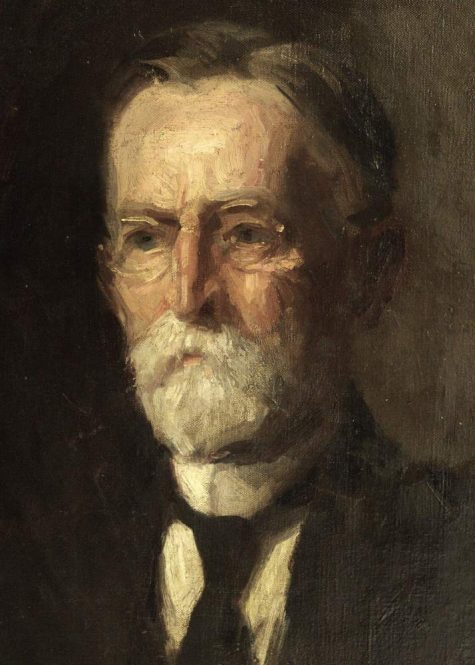
Portrait by: H. Willard Ortlip – 1925
00158
William Henry Ortlip
1851 – 1936
As a child William Henry Ortlip, the father of H. Willard Ortlip, dreamed of formal full-time study at the Pennsylvania Academy of Fine Art (PAFA), though he knew his family could not afford such training. He settled for commercial illustration and sign painting, and remained an amateur in portraiture and still life.
William painted portraits of his political heroes like “Lincoln” (03282). He also did local landscapes “Home for Orphans” (03199) and domestic still life canvases: “Basket of Cherries” (01191), “Orange in a Goblet” (01427), “Peanuts” (01190), and “Bibbed Cat” (03210). He enjoyed some contact with the Academy, especially through his friend, painter Thomas Eakins.
William and his wife, Emma McCarter Ortlip, were long-time members of the Methodist Episcopal church, where William served in lay ministry roles. They lived in the Philadelphia area with their three children, Elsie, H. Willard, and Helen.
Not long after settling into a new two-story house Emma designed to accommodate their growing family and her husband’s widowed father, she sickened and died. In a grim coincidence, William lost his father and his wife on the same day, April 12, 1891.
Facing single-parent status, William moved his three small children to a modest house in town, where he hired Carrie E. Miller as a housekeeper and nanny. Eventually he married her, and two more daughters were born to the family. William resolved that his only son’s precocious artistic talent would have the professional nurturing he, himself, had missed.
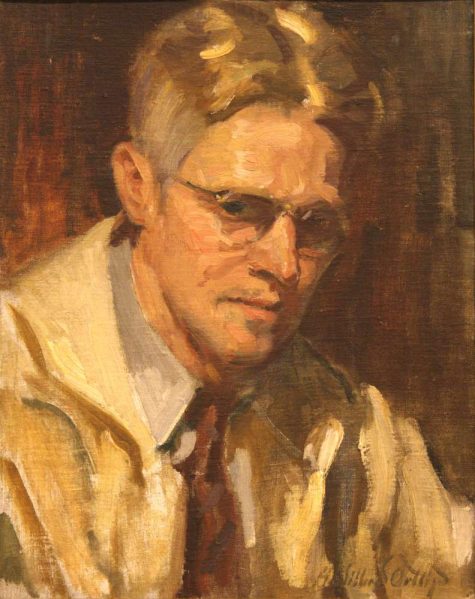
Self-portrait – 1935
00172
Henry Willard Ortlip
1886 – 1964
Willard (known professionally as H. Willard), the son of William Henry Ortlip, was an artistically gifted and highly motivated child. Recognizing this, his father enrolled him at thirteen in a correspondence study offered by the Chicago School of Illustration. Willard received thoughtful assignments and rigorous criticism. The file of lessons, individualized instructions, performances, and evaluations still exists and is archived with the Ortlip Family Art Collection (OFAC).
In 1902, at age sixteen, Willard applied and was accepted to the country’s premier art school, the Pennsylvania Academy of Fine Art (PAFA). Here he studied for eight years, taking in all he could. His teachers included his mother’s first cousin, Henry McCarter, PAFA’s first Teacher of Illustration. They also included PAFA legends Thomas Anshutz, William Merrit Chase, Sergeant Kendall, Cecilia Beaux, and Hugh Breckenridge.
The influence of Thomas Eakins, John Singer Sargent, and Mary Cassatt of the preceding generation of painters was still strong. At the same time, painters like Chase and other enthusiasts of the artistic movement known as the “Ashcan School” were also agitating for greater realism.
Willard’s training was traditional, portraiture his strength. He won the Academy’s first Charles Toppan Prize in 1908 with “Solitude” (02729). He also won a Cresson Travel Scholarship twice, taking him to museums and providing opportunities to study in Europe.
It was at the Academy that H. Willard met his future wife, Aimée Eschner.
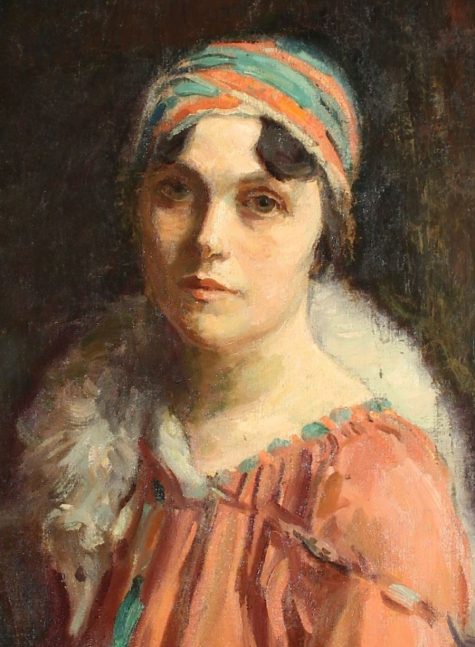
Portrait by: H. Willard Ortlip – 1912
02535
Aimée Eschner Ortlip
1888 – 1969
Daughter of a prosperous Philadelphia clothing manufacturer and his wife, Louis and Emma Israel Eschner, Aimée began study at the Pennsylvania Academy of Fine Art (PAFA) in 1907. She studied numerous genres, ultimately settling on florals and landscapes.
In one of William Merritt Chase’s classes, Aimée met Willard Ortlip. When she won a Cresson Award, the same year Willard won his second Cresson, the two found themselves in steady shipboard company between New York and Southampton, England. They returned engaged. When their portraits of each other hung together at the spring term exhibition, faculty quipped that their work was married though, scandalously, they were not! They wed in May 1910 and opened a portrait studio on Independence Square, Philadelphia.
Aimée and Willard immediately secured commissions, particularly from prominent Philadelphians, company CEOs, and wealthy elite who wanted portraits of their wives and children. Within the year their own first child, Aileen, was on the way; Marjorie, Willard, Henry, Stephen, Ruth, and Paul would follow, usually at two-year intervals.
Needing more space, the family moved out of the city into a country farmhouse. Neighboring children joined the artists’ children as ready models for magazine covers and other commercial jobs such as “Tea Party” (00171) and “Animal Friends” (00720). This pattern would repeat through subsequent moves—to Greenwich Village, to Hell’s Kitchen, then across the Hudson to the Palisades and Fort Lee.
New York provided H. Willard with significant contracts, such as a lengthy magazine cover series on the Old Testament prophets for the Christian Herald – March 1916 cover: “Vision of Isaiah” (00657). He increasingly desired for his art to count for something spiritually consequential. After much reading and dissatisfied seeking, Aimée, under the influence of her father-in-law’s strong faith, was persuaded that Jesus Christ could meet her soul-quest. “Concerning Grandfather” (00009) is her tribute to William Henry Ortlip.
Willard and Aimée continued to paint portraits and other subjects for essential income, but their focus became one of service. Their religious conversions led to H. Willard’s gospel “chalk talks” on street corners and in tent meetings, and then to many church mural commissions: “Ye Shall Know the Truth” (02067) and “Christ Controls the Sea” (00294) .
After their children were grown, the couple spent a decade sharing their art at evangelistic meetings “H. Willard Chalk Talk” (02061) throughout the eastern states. They drew an audience from local churches and secular clubs, H. Willard carrying on his chalk ministry with quick portraits and biblical illustration, Aimée with her spectacular florals “Snapdragons and Roses” (02692) , “Bev’s Lilacs” (03447) and still lifes “Teapot in Window” (00004).
In 1947 they accepted an invitation from Houghton College to be Artists in Residence, joining daughters Aileen and Marjorie at the school in western New York State.
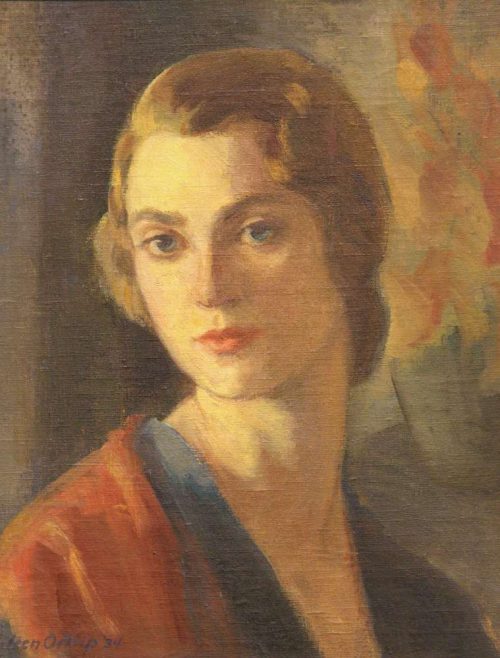
Self-portrait – 1934
00150
Aileen Ortlip Shea
1911 – 2007
Aileen, the eldest child of H. Willard and Aimée, studied with Leon Kroll at the National Academy of Design in New York. In 1935 she won a Pulitzer Travel Scholarship, enabling her to study in Paris at the Sorbonne. “Henry in Band Uniform” ( 00013) and “The Old Friar” (00015) were both portraits in her Pulitzer portfolio.
During her time in Europe, Aileen painted extensively in Spain. When she returned in 1936, Houghton College (now Houghton University) President James S. Luckey offered her the job of starting an art curriculum for the institution. She accepted and taught at Houghton for ten years.
Aileen committed herself to portraiture. After leaving her position at the college, she continued to live in western New York State, where her husband, the Reverend Alton J. Shea, pastored various churches. She painted hundreds of canvases of leaders, judges, children, and family friends, sometimes returning to campus to cover faculty leaves and do official portraits.
In the 1970s, Aileen and Alton spent significant time teaching in West Africa, where their three children served as missionaries. Aileen painted and sketched with oils, pencils, pastels, watercolors, and felt-tips throughout their time there. Faces, she said, were her joy. She also carried on the “chalk talk” tradition in dozens of locations, from the capital city to the remotest village.
Over the decades, Houghton University commissioned nearly thirty portraits such as “Frieda A. Gillette (00010)” and “Daniel R. Chamberlain (00044)” from Aileen. In 1991, the school awarded her an honorary doctorate of fine arts. The New York Senate named her one of its “Women of Distinction” in 2004. Her palette was still wet when she died at age 95.
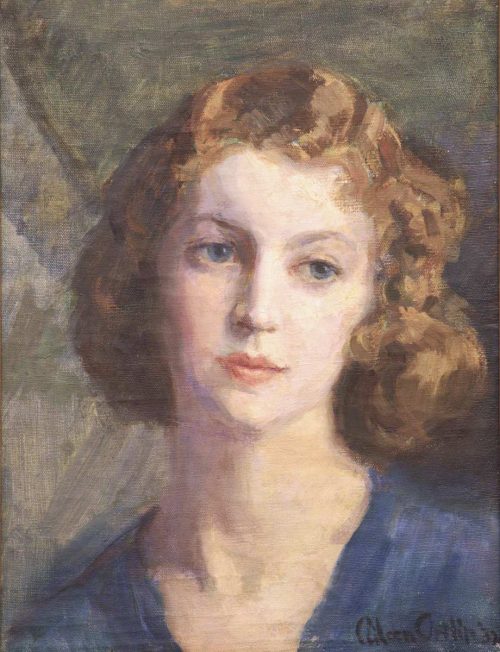
Portrait by: Aileen Ortlip Shea – 1932
00011
Marjorie Ortlip Stockin
1913 – 2006
Marjorie, the second child of H. Willard and Aimée, studied art at the National Academy of Design in New York, where she was awarded the Sydan Silver Medal for “Crouched Athlete” (00487) in 1933. She began an art education major at the Normal School of Newark, New Jersey (now Kean University) and finished her baccalaureate at Columbia University. Concurrently, Marjorie taught art at her high school alma mater in Fort Lee and then at Collingswood, New Jersey. During the summers, she began accruing credits toward her graduate degree.
In 1939 Marjorie accepted an invitation from President Stephen Paine to join her sister Aileen at Houghton University. At the end of the academic year 1940-1941, she married the campus’s young Classics teacher, F. Gordon Stockin, Jr. Together the couple continued what would become a lifetime of service at the school.
World War II interrupted the arrangement Marjorie had negotiated with the University of Buffalo for art students to complete majors there in their fourth year. Furthermore, all funding for Houghton’s new art curriculum was suddenly withdrawn. To keep interest in art alive in the shrunken and now largely female student body, Marjorie continued teaching gratis.
As the country in the 1940s went deeper into war, retrenchment, and rationing, Marjorie and Gordon started their family of four children, borrowed to purchase a farm at the edge of campus, planted a large garden in the front yard, and installed chickens in the back. With the country recovering from both the Depression and war, Marjorie again championed the development of an art major on campus and saw the effort succeed.
She continued to paint landscapes “Scotch Pines” (00500), florals “Summer Flowers” (00041), still lifes “Fiery Peaches” (02461), and portraits “Frank Gordon Stockin Jr.” (00060), steadily extending her artistic range and expertise through summer courses at various institutions and with private teachers. Houghton recognized her service and achievement with an honorary doctorate in 1994.
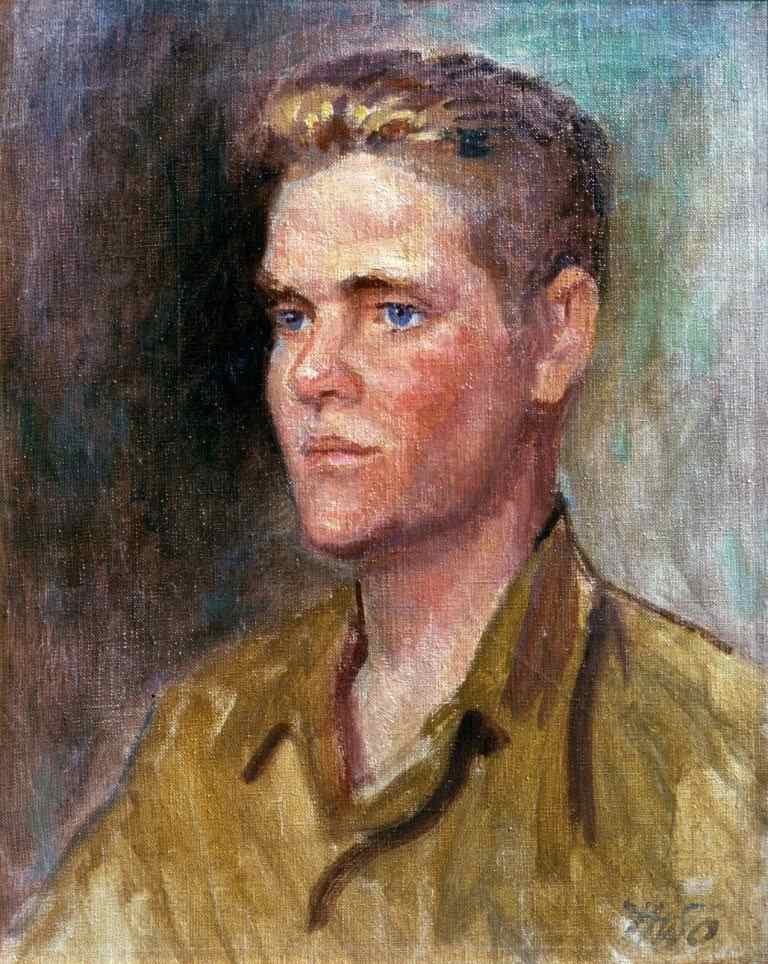
Portrait by: H. Willard Ortlip – 1944
00035